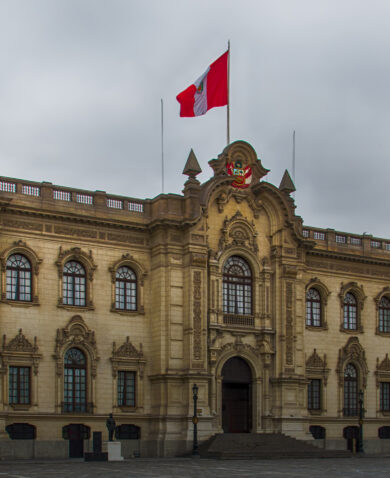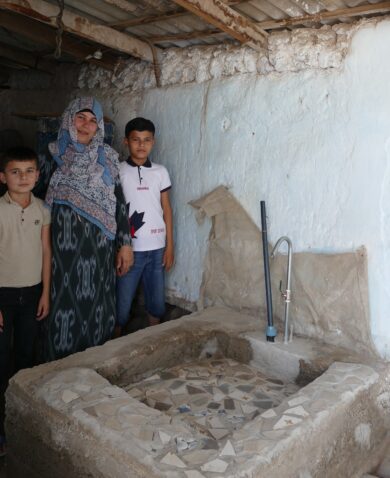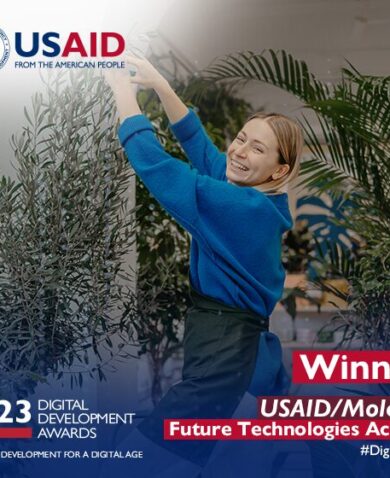
2020 Vision: Three Development Trends of the New Decade
January 21, 2020 | 4 Minute ReadThe development community needs $2.5 trillion in additional finance each year to achieve the Sustainable Development Goals by 2030. Estefania McPhaul and Julian Guelig explore three global development trends we’ll see in 2020 to meet this need and to navigate the changing development landscape.
Despite a global commitment, the U.N. estimates that countries and donors need $2.5 trillion in additional finance each year to achieve the Sustainable Development Goals (SDGs) by 2030. According to the Organisation for Economic Co-operation and Development, official development assistance in 2018 was $153 billion. The number speaks for itself: the development community simply cannot afford to fund the sustainable development goals alone. Thankfully, times are changing. Companies are expanding to fast-growing emerging economies with booming consumer spending. Conscious capitalism is on the rise; the private sector is responding to socially conscious consumers who demand that they do better. With more companies focusing on environmental, social, and governance targets in developing countries, the interests of the private sector and the development community are aligning.
This blog post explores three trends the development community will see in 2020 as a result of the changing development landscape: more private sector engagement across all sectors, a focus on blended finance to catalyze private investments for development, and adapting development programs to technology, the “fourth industrial revolution.” Development implementors will need to prioritize these areas and pilot new development approaches to co-lead with the private sector and integrate technology.
Private Sector Engagement
Development practitioners have worked with the private sector for decades. USAID has used Global Development Alliances since 2001, and public-private partnerships and loan guarantees before that. The U.K.’s Department for International Development (DFID) has prioritized the private sector since 2012. So private sector engagement isn’t new, but what has changed is how the development community is working with the private sector. USAID’s recent private sector engagement policy, for example, is an intentional shift to pursue market-based approaches and investment to accelerate countries’ progress on the Journey to Self-Reliance. Instead of focusing only on leveraging private sector resources to advance development objectives, donors and implementers are working with the private sector as co-creators of market-oriented solutions to achieve sustainable progress towards shared development interests.
For example, through the USAID Asia and Middle East Economic Growth Best Practices program, Chemonics worked with DiasporaID, a Lebanese digital platform that connects and promotes collaboration among the Lebanese diaspora communities worldwide to increase the start-up’s visibility and user adoption. DiasporaID’s growth aligned with the project’s broader development objective of identifying innovative approaches and partners to drive economic growth. By taking a private sector-centered approach to solving development challenges, donors and practitioners can ask themselves: Are there factors constraining the private sector from involvement and investment? If so, how can we help to ease those constraints?
Blended Finance
As donors put private sector engagement at the forefront of their strategies, blended finance is becoming a popular tool to unlock development finance for emerging markets. Blended finance is the strategic use of donor or public funds to increase private sector investments in sustainable development. Unlike public-private partnerships — a contract between government and the private sector to deliver a public service — blended finance occurs when a third party (donors) commits funds to draw in private investments that would otherwise not occur because of real or perceived risks. Blended finance structures are cross-sectoral and help advance the sustainable development goals while yielding a market-rate of return.
The USAID Moldova Competitiveness Project (MCP), implemented by Chemonics, worked with Moldova’s largest internet provider, Starnet, to build the country’s first information technology business park, Digital City. MCP facilitated an $8.9 million Development Credit Authority loan guarantee that served as the additional collateral Starnet needed to qualify for a loan to continue developing and building the park. Digital City’s first office tower opened on December 4, 2019 finalizing Phase 1 of the project, with the construction of the park’s second tower set for completion in the coming year. By 2025, the total investment for the park is expected to exceed $35 million, creating a hub for 50 information technology companies and technology startups in Moldova.
Fourth Industrial Revolution
When discussing private sector engagement and blended finance, we cannot ignore the importance technological innovation plays in unlocking potential growth. From Facebook’s launch of the Libra, a digital currency, to Chemonics’ use of drones in last-mile medical supply chains for the USAID Global Health Supply Chain Program-Procurement and Supply Management Project, technology shifts are empowering end users and forcing the development industry to adapt or become obsolete. The Fourth Industrial Revolution (4IR) has fundamentally altered our daily lives; prosperity and well-being will increasingly be determined by access to artificial intelligence and machine learning, blockchain, cryptocurrency, and mobile money, robotics and fifth-generation wireless communications. Like previous industrial revolutions, however, periods of rapid technological advancement have the potential to simultaneously exacerbate inequality while invigorating lagging economies. Donor agencies and government policymakers have an opportunity to proactively prepare for and harness the 4IR in their development programming to ensure the communities we serve experience more of technology’s benefits rather than its potential detriments.
For example, DFID’s Digital Strategy (2018-2020) and USAID’s first-ever digital strategy (in development) as well as its draft Economic Growth Policy, explore and define best practices around the intersection of technology and poverty alleviation to ensure we “leave no one behind,” with an emphasis on private sector engagement to ensure sustainable and cost-effective interventions. DFID, for example, outlines opportunities for engagement with digital technologies across multiple technical sectors, including disbursing cash through mobile money in humanitarian responses, providing farming tips and weather reports in local languages via mobile phone companies, and GPS mapping software to identify at-risk patients. While it’s easy to be skeptical of seemingly arcane technologies, we must leverage new approaches to strengthen and expand our work.
A new decade brings exciting opportunities for development. With frameworks and policies in place, now is the time for donors and implementers to start learning by doing. When planning new programs or implementing existing initiatives, development practitioners should remember these trends and stay current with the industry’s direction and priorities. Moreover, practitioners must share experiences and innovations with one another so that donors, implementers, and the private sector can learn how to work together towards the same goal: achieving systemic development impact for the communities we serve across the globe by 2030 and beyond.
Posts on the Chemonics blog represent the views of the authors and do not necessarily represent the views of Chemonics.



























